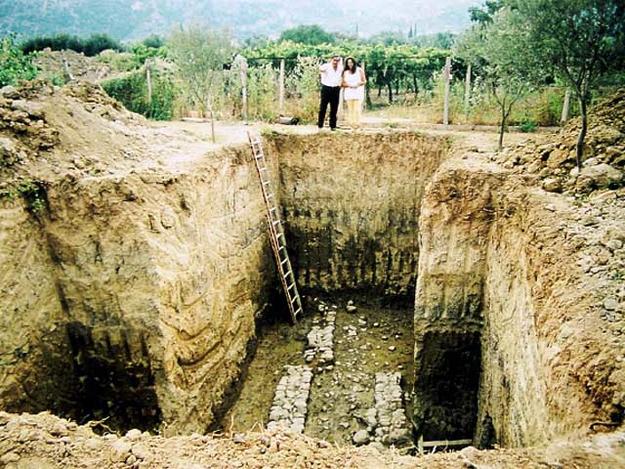2004 and 2006 World Monuments Watch
In 2001, after years of searching, archaeologists came upon the long-lost site of Helike, a Classical Greek city buried under meters of silt on the southwest shore of the Gulf of Corinth when an earthquake struck the region in 373 b.c. Test trenches have yielded pottery as well as gold and silver ornaments, suggesting that the buildings at Helike may belong to a royal megaron, or palace residence. Beyond the Classical city, excavators have found the remains of an Early Bronze Age site with artifacts dating to ca. 2500–2300 b.c., as well as evidence of a road that, during the Roman period, linked Helike with the cities of Patras and Corinth. Although Helike has been preserved for more than 2000 years, the site may soon be destroyed. The Greek National Railway is planning to streamline travel time between Patras and Corinth by straightening an existing rail line. The improved rail link is slated to cut through the heart of what remains of the ancient Greek city, most of which has yet to be excavated.

